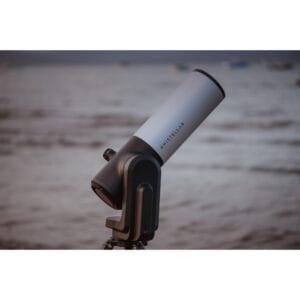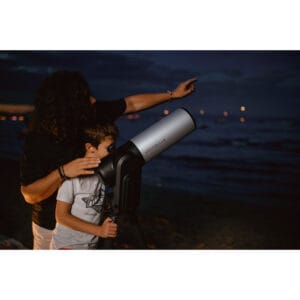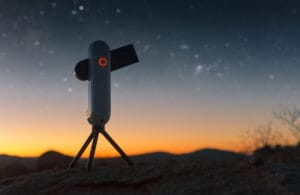Viewing Saturn through a telescope is for many the moment when stargazing becomes magical. Not a fuzzy light spot, but a planet with a clear ring system that you see yourself, live. But how sharp do you really see those rings? And what’s the difference between a live view and a stacked image? In this blog, you’ll get a realistic picture of what to expect, supported by actual observations.
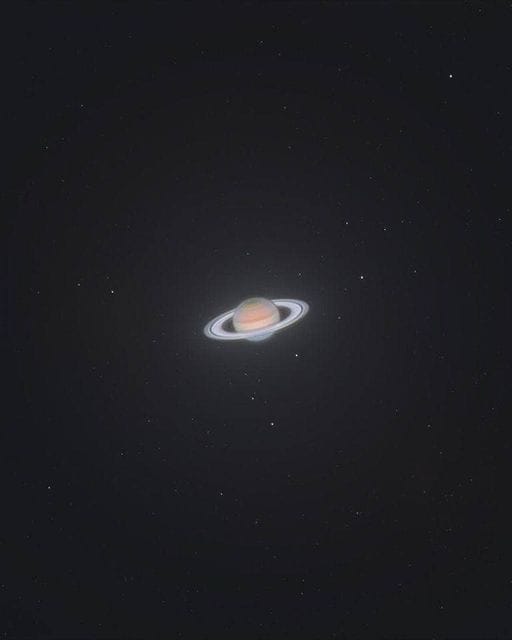
What Do You See when Viewing Saturn Visually?
At a magnification of about 80x to 120x, you see Saturn as a yellow disk with rings on both sides. The image is compact but clear… you can see this isn’t a star. Under favorable conditions, you can see a gap between planet and ring: the beginning of the Cassini Division.
Image 1 shows a visually realistic view: Saturn floating in a starfield, the rings separate from the planetary disk. No pronounced color or detail, but a clearly visible structure.
Once you reach 150x to 200x magnification, you see more definition: the rings become sharper, the difference between the A and B rings becomes visible, and in good seeing conditions, even the Cassini Division briefly shows itself.
What Do You See with Post-Processing?
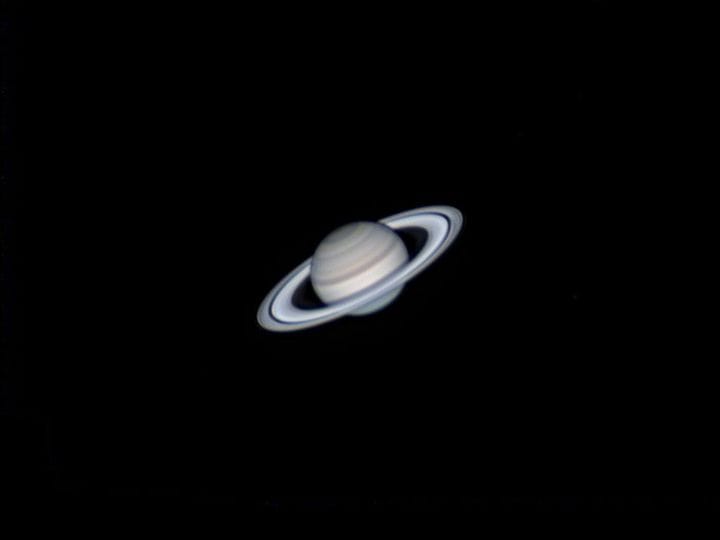


The sharper photos in this blog, like Image 2 through 3 are the result of:
- High frame rate videos
- Software stacking (AutoStakkert!, Registax, PixInsight)
- Contrast enhancement and color correction
In these photos, you see the planet as a smooth sphere with clear bands, the ring system in full sharpness, and sometimes even shadows or color nuances on the rings. These results are only achievable with:
- A telescope with at least 130-150 mm aperture
- Cameras like the ZWO ASI series
- Good seeing and patience
Without processing, you won’t achieve this level. But that’s what makes it interesting: you can get more out of your images than from a visual session using the same telescope.
Which Magnification is Suitable for Saturn through a Telescope?
We repeat this often enough, but remember that the lens aperture X 2 is the maximum useful magnification of a telescope. With this in mind:
✓ Rings recognizable: from 50-60x (you can even achieve this with binoculars, don’t expect details. For that you need to purchase a telescope).
✓ Rings clearly visible separate from planet, with recognizable oval structure: from 100x
✓ Cassini Division visible: from 150x with good seeing
✗ More than 250x magnification only makes sense with large aperture and excellent conditions
What’s more important than pure magnification? Optical quality, stability, and atmospheric turbulence (seeing). A good Barlow with a quality eyepiece beats a cheap 300x magnification like those often seen on Bol.com every time.
Best Time to View Saturn through a Telescope?
Saturn is most favorably positioned in the sky during opposition, when it’s closest to Earth and visible all night. In 2025, this occurs on October 15.
For the sharpest images:
- Observe when Saturn is high above the horizon, not just above houses or trees, but really “high in the sky”. This is usually later in the evening or around midnight. The higher it stands, the less trouble you’ll have with shimmering air and blurry images
- Avoid bright moonlight (around new moon)
- Let your telescope acclimate to the outdoor temperature
- And remember: light pollution has little effect on planets — Saturn remains clearly visible
Which Telescopes are Suitable for Saturn?
For a clear and sharp view of Saturn and its rings, we recommend:
- Sky-Watcher Heritage 130/650 – compact, powerful, and popular among beginning planet observers
- Sky-Watcher Heritage 150/750 – more light gathering, better contrast in the rings
- Star sense explorer line from Celestron: For those who want help finding objects with the smart app that helps you navigate
- GSO Dobson 152/1200 or 200/1200 Deluxe – visual top segment for deep details
- Maksutov-Cassegrain 127 mm – ideal for those who want to photograph planets with a compact system
Preferably use high-quality eyepieces and avoid cheap 4mm H-eyepieces or unusable Barlow lenses.
See also our planet telescope selection guide for more explanation about these models.
Conclusion
Seeing Saturn through a telescope is unforgettable. It’s one of the few objects in the sky that’s immediately recognizable. The rings are truly visible without Photoshop or filters. But it’s important to know what to expect. The images in this blog show that spectrum: from simple visual observation to processed astrophotos.
Want to experience Saturn for yourself? Check out our current telescope selection or try telescope rental at telescoop.nl, then you’ll immediately know what’s really possible with your view of the universe.

